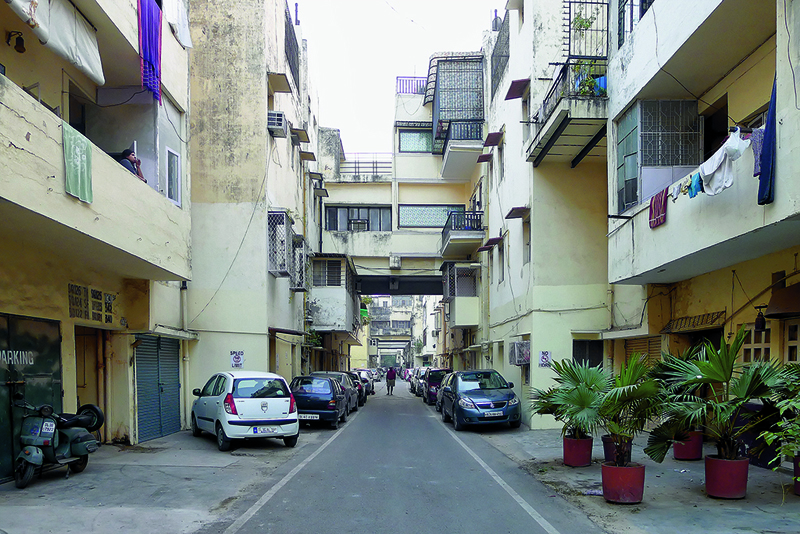CHAPTER IV: THE EVOLUTION OF URBAN ARTIFACTS Land Ownership The Delhi Development Authority (DDA) was created in 1957 in order to cope the influx of refugees which Delhi faced after the partition of India. This state owned institution has been the single largest real estate developer in Delhi, leading land promotion, urban planning schemes […]
CHAPTER IV: THE EVOLUTION OF URBAN ARTIFACTS
Land Ownership

The Delhi Development Authority (DDA) was created in 1957 in order to cope the influx of refugees which Delhi faced after the partition of India. This state owned institution has been the single largest real estate developer in Delhi, leading land promotion, urban planning schemes or development of housing typologies. This photograph is part of a typological research conducted at the ETH Zurich at the Studio Christ & Gantenbein and was published in Typology – Paris, Delhi, São Paulo, Athens by Emanuel Christ, Victoria Easton, Christoph Gantenbein, Cloé Gattigo (Park Books, Zurich, 2015).
Cloé Gattigo was born in 1984 and grew up in Haïti. She graduated with a Master in Arts of Architecture at the Accademia di architecttura di Mendrisio in 2007. She worked as an architect for Christ&Gantenbein and as a research assistant at the Christ&Gantenbein Design studio at the ETH Zurich.

